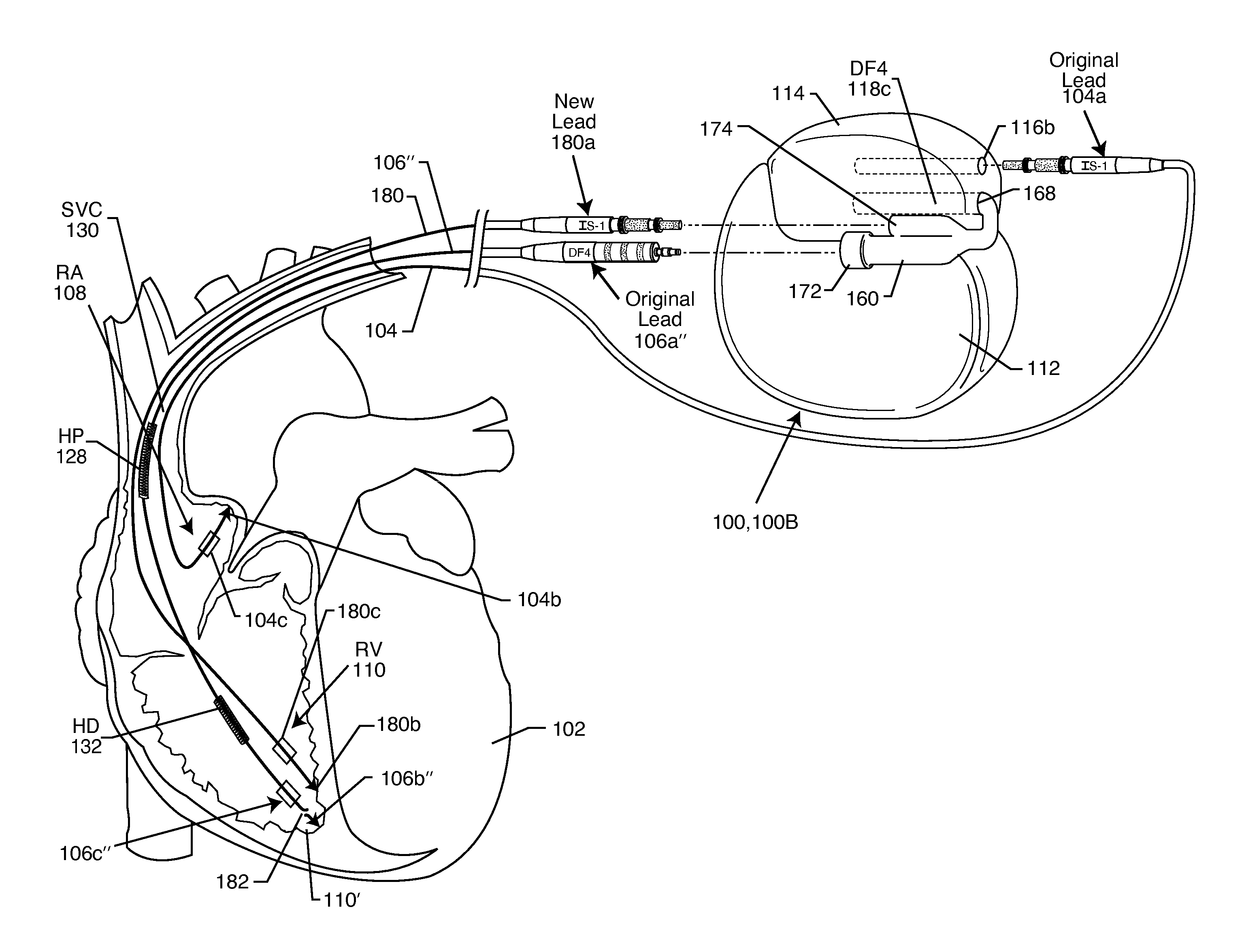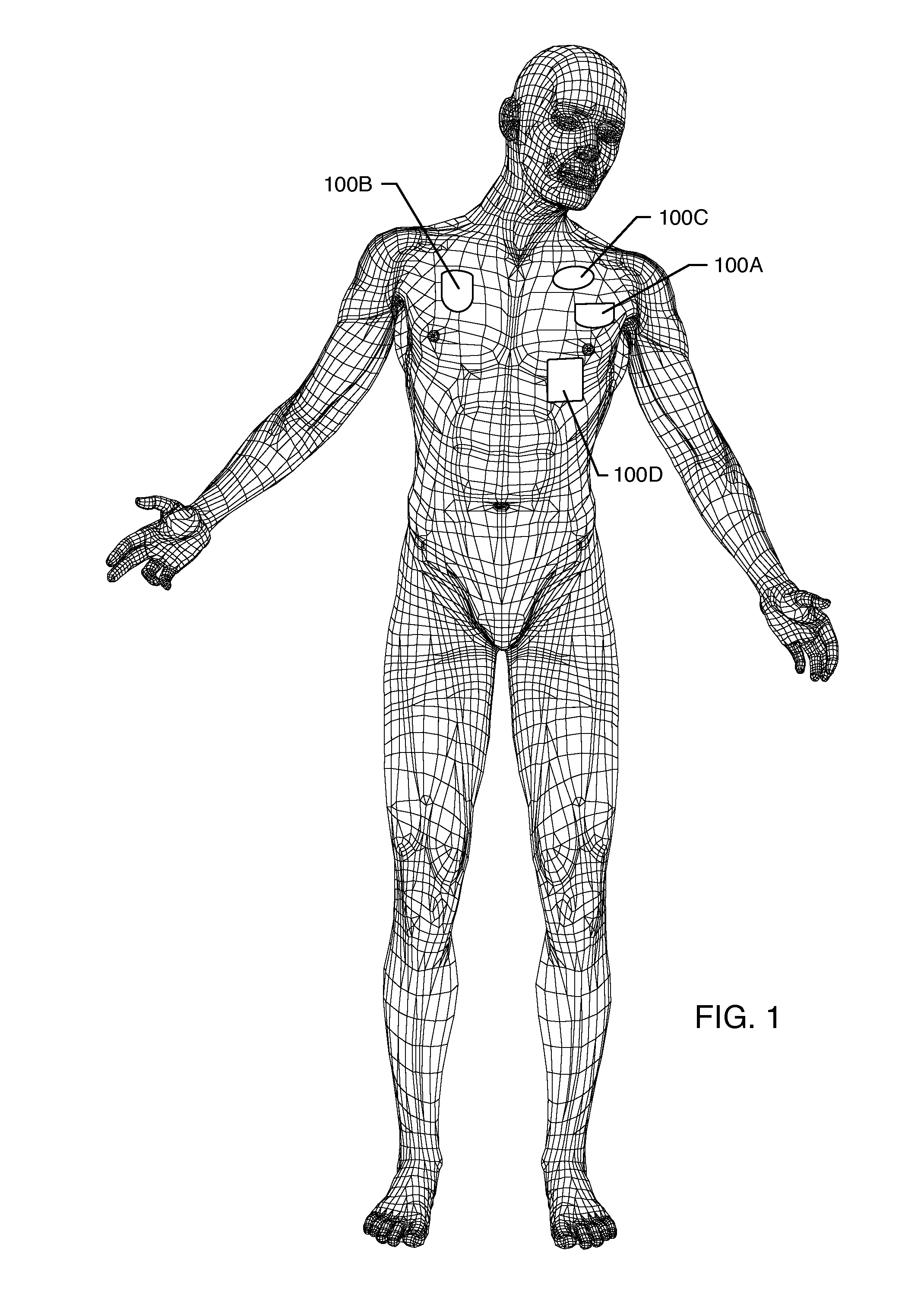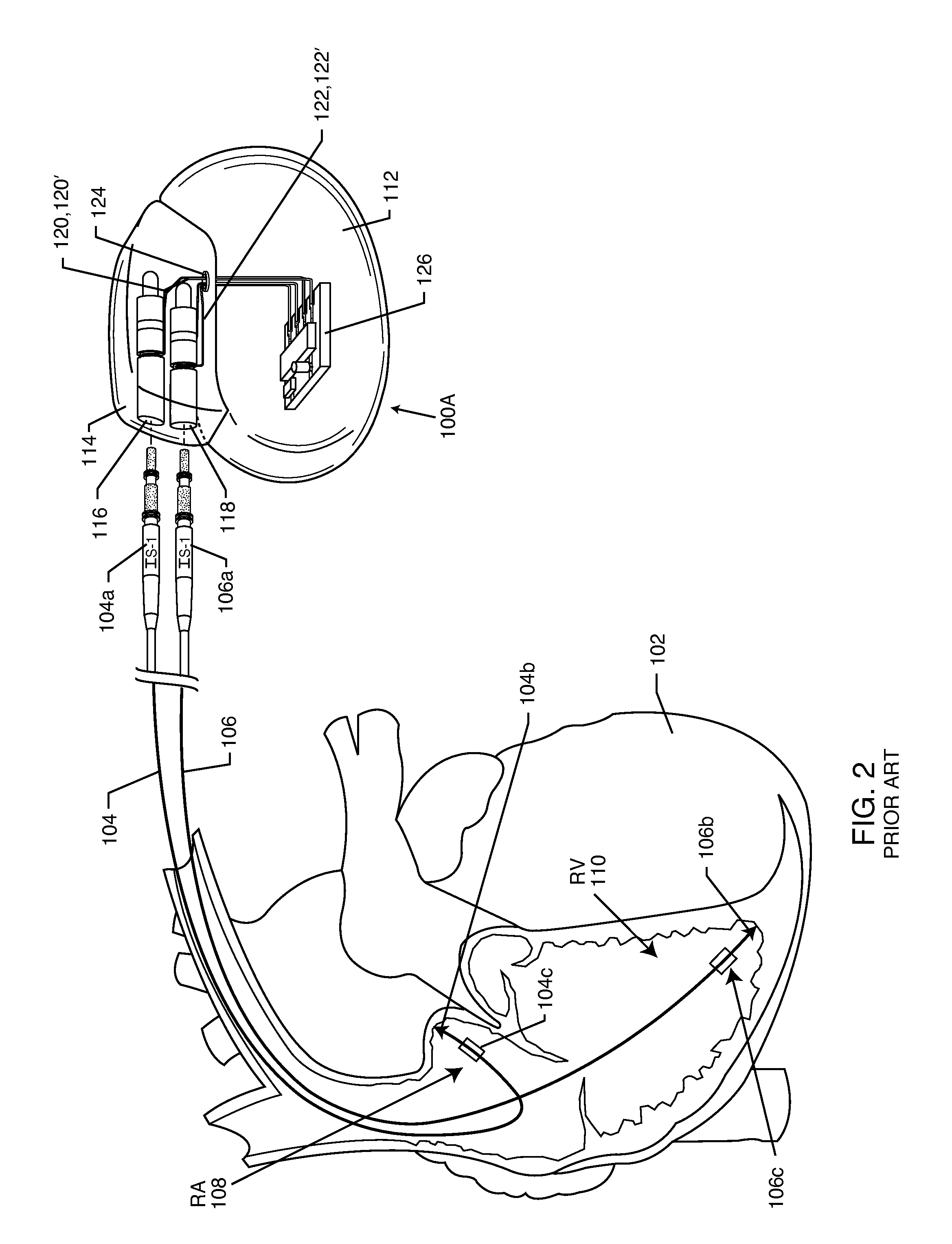Secondary header for an implantable medical device incorporating an ISO DF4 connector and connector cavity and/or an IS4 connector and connector cavity
a medical device and connector technology, applied in the direction of coupling device connection, coupling device two-part connection, therapy, etc., can solve the problems of increasing the difficulty and risks associated with subsequent pulse generator or lead replacement/repair surgery, conductor failure, especially of is4 and df4 style leads, and not always practical to extract is4 or df4
- Summary
- Abstract
- Description
- Claims
- Application Information
AI Technical Summary
Benefits of technology
Problems solved by technology
Method used
Image
Examples
Embodiment Construction
[0096]The present invention is directed to a secondary header for use with implantable medical devices. More particularly, the secondary header of the present invention is intended to replace or supplement dysfunctional or inactive conductors or connections in medical leads.
[0097]Reference is made to section 3 of ISO Standard 27186 as providing definitions to terms and terminology which are used to describe the present invention. Accordingly, as used herein: “bipolar” means having two poles or electrodes; “connector system” refers to an assembly consisting of a lead connector and a connector cavity that are electrically and mechanically joined; “connector cavity” is defined as a cavity within the pulse generator which is intended to receive a lead connector and an identical cavity within a secondary header; “fixation zone” is a zone located in the lead connector pin and within the connector cavity where the lead connector is mechanically secured within the connector cavity; “high-vo...
PUM
 Login to View More
Login to View More Abstract
Description
Claims
Application Information
 Login to View More
Login to View More - R&D
- Intellectual Property
- Life Sciences
- Materials
- Tech Scout
- Unparalleled Data Quality
- Higher Quality Content
- 60% Fewer Hallucinations
Browse by: Latest US Patents, China's latest patents, Technical Efficacy Thesaurus, Application Domain, Technology Topic, Popular Technical Reports.
© 2025 PatSnap. All rights reserved.Legal|Privacy policy|Modern Slavery Act Transparency Statement|Sitemap|About US| Contact US: help@patsnap.com



